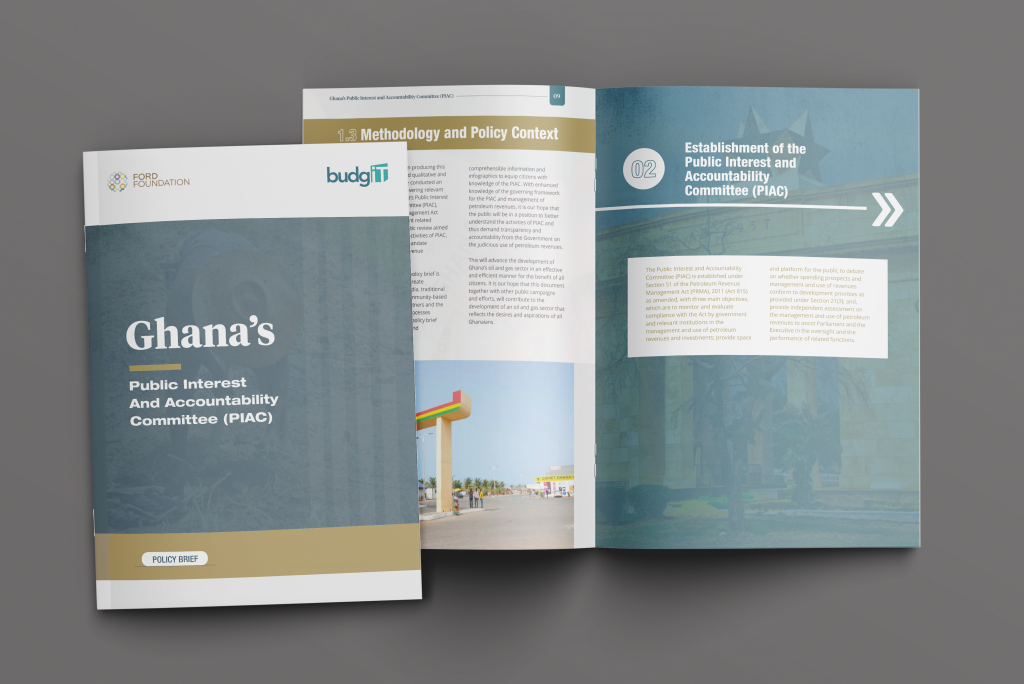Ghana’s continued production of oil and gas after its commercial-scale discovery is a key driver of the country’s economic growth (PIAC,2021). When substantial quantities of oil and gas were discovered off Ghana’s west coast in 2007, the majority of Ghanaians reacted with a mix of hope and trepidation. There were valid reasons for optimism for some, as the discovery of oil and gas will free up significant financial resources needed to address the country’s massive infrastructure deficit and thwart efforts to improve the quality of life for Ghanaians.
On the other hand, there were also valid reasons for concern for others, as the corrosive impact of oil wealth on the democratic development of neighbouring oil-rich African states was sufficient to cause concern. Currently, there are four petroleum basins in Ghana namely the Tano-Cape Three Points Basin, Saltpond Basin (Central Basin), Accra-Keta Basin (Eastern Basin) and the Voltaian Basin (Inland Basin). This is after the consortium of companies comprising Tullow Ghana Limited, Kosmos Energy Ghana, Anadarko Petroleum Corporation, Sabre Oil and Gas Holdings Limited, and the E.O. Group in conjunction with the Ghana National Petroleum Corporation (GNPC), discovered oil and gas resources in the offshore Tano-Cape Three Points Basin in 2007 (PIAC, 2021).
Ghana quickly called for a national dialogue on how revenues generated from the oil and gas sector would be better managed with the assistance of its development partners, guided by its commitment to avoid making the same mistakes as some of its oil-rich neighbours for whom the discovery of oil and gas has been more of a curse than a blessing.
This led to the formulation of the Petroleum Revenue Management Act (PRMA) 2011 (Act 815) which seeks to guide the spending of petroleum revenues. The bill was passed in March 2011 but due to challenges with implementation, it underwent some amendments in June 2015 to provide a better framework for the management of petroleum revenues. The Public Interest and Accountability Committee (PIAC) was established under Section 51 of the PRMA, to among others, monitor and evaluate compliance with the Act. The Committee was inaugurated and commenced work on 15th September 2011 (PIAC, 2017; 2018; 2019; 2020; 2021).
The petroleum revenue management law provides the framework for the collection, allocation, and management of petroleum revenue in a responsible, accountable, and sustainable manner for the benefit of citizens. Experience from other established oil and gas jurisdictions calls for good resource management practices, particularly those anchored on long-term national development strategies that aim to invest in the public sector instead of private consumption. This should also aim to ensure future generations also benefit from the finite oil and gas resources (PIAC, 2019; 2021).
Although Ghana has implemented these measures in an effort to avoid the oil curse, it is indisputable that the political economy of Africa in terms of oil and gas is not entirely a good news story, according to the literature that is currently available and the numerous “living examples” of oil-producing countries in Africa. Among others, nations like Nigeria, Sudan, Angola, Cameroon, Equatorial Guinea, and Chad have failed to use their oil and gas riches to better their nations and peoples materially. Data from the World Bank Development Indicators which is corroborated by data from the National Statistical Bureau of Nigeria indicates that the average oil rent as a percent of GDP in Nigeria, from 1972 to 2016 was 23.3% (Graham, Gyampo, Ackah & Andrews, 2020; World Bank Group 2019)
As the negative effects of the coronavirus disease pandemic (COVID-19) started to fade away on a global scale in 2021, the various petroleum exploration companies gradually resumed production and expansion plans as most restrictions placed in place as a result of the COVID-19 outbreak were gradually relaxed, and steps were taken to ensure that activity could continue during the review period. During the period under review, Ghana’s economy started to show indications of recovery, and there was some, albeit gradual, activity in the local petroleum sector. Despite this, the nation was still able to generate revenue to add to its resources for managing the economy.
Although the Ghanaian oil and gas industry is undoubtedly in its infancy, there seems to be a sizable body of literature focusing on a variety of pertinent topics, including the politics of oil and gas (Graham, Ackah, and Gyampo 2016), petroleum revenue and managing people’s expectations (Andrews 2013; Asante 2009; Bybee and Johannes 2014; Gyampo 2011), the roles of civil society organizations (Debrah and Graham 2015), and the intersectoral effects of oil production (see Ayelazuno 2014; Gyampo 2014; Gyampo, Kuditchar, and Asare 2011; Kopinski, Polus, and Tycholiz 2013; Obeng-Odoom 2014a, 2014b, 2015; Okpanachi and Andrews 2012; Phillips, Hailwood, and Brooks 2016; Panford 2017).
All of these preceding studies have advanced our understanding of Ghana’s oil and gas industry. The politics of institutional assessment study conducted by Oppong (2016) and Graham, Gyampo, Ackah, and Andrews (2020) discussed the creation of the PIAC as well as some of the major technological, political, and structural barriers that have undermined the PIAC as a transformative tool in the oil and gas industry. However, PIAC has not yet received enough attention.
This policy brief on PAIC is an important addition to the earlier accounts provided by Oppong (2016) and Graham et Al. (2020) in that it provides additional insight on PIAC as a significant institutional arrangement for the promotion of transparency and accountability in the management of petroleum revenues in Ghana. The need to conduct a particular review of this citizen-led organization during the previous ten years is well known, having been established more than ten (10) years ago. In accordance with the PRMA’s standards, the policy brief would also emphasize the budgetary allocations to PIAC. This section sets out the following: Background and introduction to the report; purpose and scope of the work; methodology and policy context, and structure of the report.
